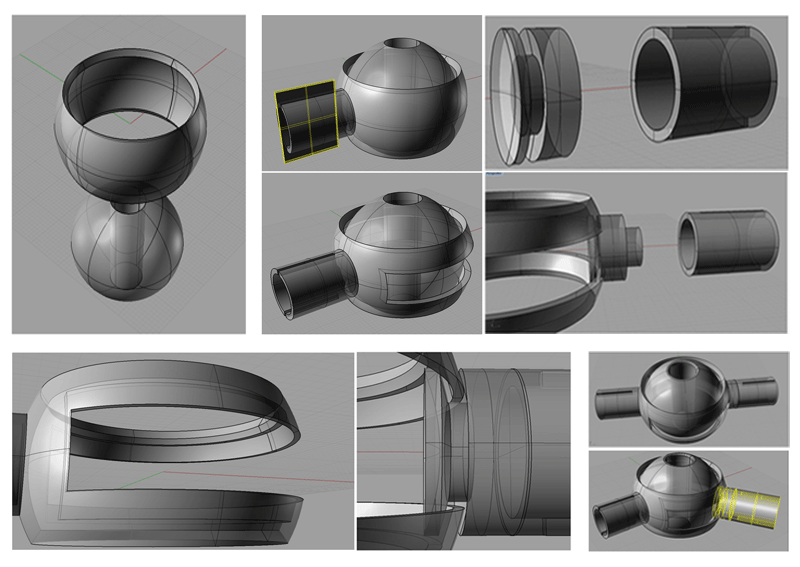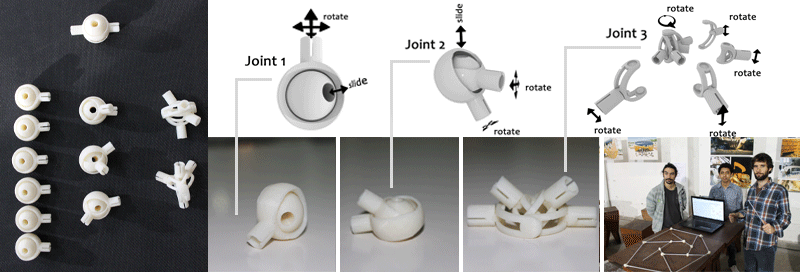MODELLING

GRASSHOPPER APPLICATION

PRODUCT

We wanted to create a set of joints that would allow our structure to expand and shrink, move in every axis and in the same time be able to connect with another module so it can be populated and create a dynamic surface. The geometry we used is based on two hexagons, one nested into the other connected only in three points. The inside hexagon can vary the length of its sides and the angles between them while moving in every direction when the outside can only vary the angles between the sides. The assembly can be tiled in two dimensions and can possibly create a lightning system or a performing façade.
1st joint –Characteritics -1 connection that permits sliding on a bar, 1 connection that permit 3-axis rotation
Geometry –One internal sphere with a hole for sliding and one external ring with a joint that car slide on the sphere offering 3-axis rotation(restricted by the bar that slides on the sphere)
Functionality – forms the internal part of our structure and allows movement to every direction
2nd joint -Characteritics -1 connection that permits sliding on a bar, 2 connections that permit 3-axis rotation
Geometry – One internal sphere with a hole for sliding and two external rings with joints that can slide on the sphere offering 3-axis rotation(restricted by the bar that slides on the sphere and the interaction between this two rings)
Functionality – forms the external part of our structure and allows movement to every direction
3rd joint –Characteritics -4 connections that permit two axis rotation
Geometry – Four different layers of half rings that can rotate about a central axis. On each ring there is a joint that can move along its length
Functionality – forms the external part of our structure and allows movement to every direction
